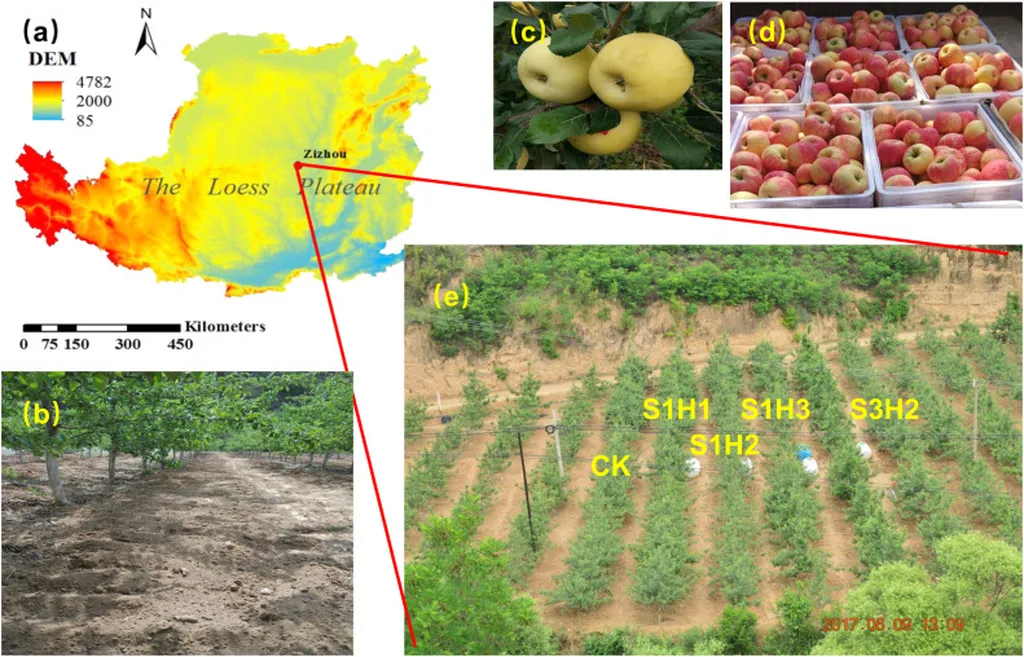In the arid expanses of China’s Loess Plateau, where water is a precious commodity, a groundbreaking study has emerged that could revolutionize apple orchard irrigation and boost water productivity. Led by Shaoxiong Ning from the College of Water Resources and Architectural Engineering at Northwest A&F University, the research delves into the optimization of surge-root irrigation (SRI) parameters to enhance apple yield and water efficiency.
The study, published in the journal *Agricultural Water Management* (translated as *Water Management in Agriculture*), addresses a critical issue: despite various irrigation strategies, about 75% of apple orchards in arid regions still suffer from drought stress. Ning and his team set out to evaluate the effects of different flow rates and sleeve/burial depths of SRI and subsurface drip irrigation (SDI) on soil moisture, canopy physiology, and root characteristics.
Their findings are promising. “Long-term SRI significantly improved the uniformity and content of soil moisture in the root zone,” Ning explains. The optimal configuration they identified—a 40 cm sleeve/burial depth with a 4 L h⁻¹ flow rate—resulted in the most uniform soil moisture distribution. This, in turn, promoted root penetration into deeper soil layers, enhancing the overall health and productivity of the apple trees.
The commercial implications of this research are substantial. By optimizing SRI parameters, apple orchards can achieve a 14% increase in yield compared to traditional SDI methods. Moreover, the fruit quality and irrigation water productivity were notably high under the optimal conditions, with a transverse diameter of 75.86 mm and a water productivity index (WPI) of 156.12 kg m⁻³.
Ning’s study also highlights the long-term benefits of SRI. “The 40 cm sleeve/burial depth and 4 L h⁻¹ flow rate could balance water-saving efficiency and sustainable development in approximately 5.5 years,” he notes. This balance is crucial for the energy sector, where water management is increasingly intertwined with agricultural practices.
The research provides a significant reference for optimizing SRI parameters in apple orchards on the Loess Plateau and similar arid regions. As water scarcity becomes a growing concern globally, the insights from this study could shape future developments in irrigation technology and water management strategies.
In an era where sustainability and efficiency are paramount, Ning’s work offers a beacon of hope for farmers and water managers alike. By harnessing the power of optimized irrigation, we can cultivate a future where water is used wisely, and crops thrive even in the harshest conditions.

